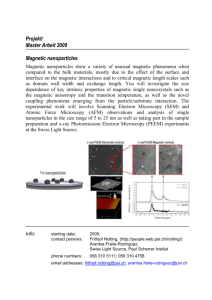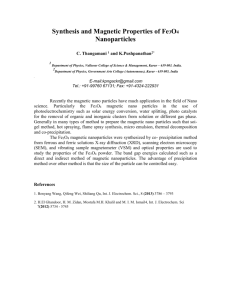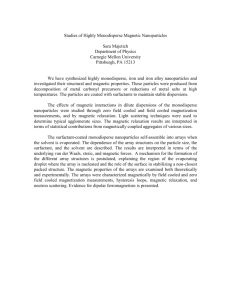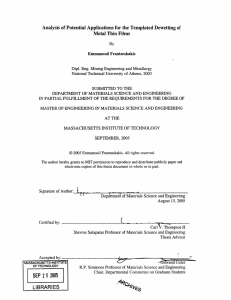Proposal Title
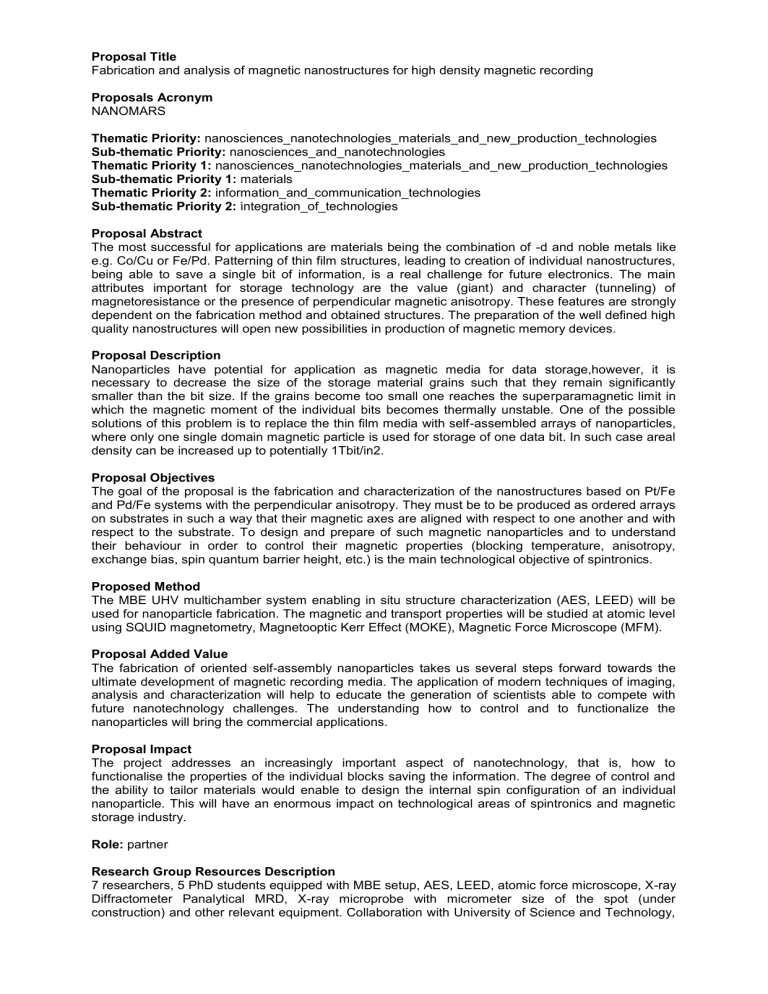
Proposal Title
Fabrication and analysis of magnetic nanostructures for high density magnetic recording
Proposals Acronym
NANOMARS
Thematic Priority: nanosciences_nanotechnologies_materials_and_new_production_technologies
Sub-thematic Priority: nanosciences_and_nanotechnologies
Thematic Priority 1: nanosciences_nanotechnologies_materials_and_new_production_technologies
Sub-thematic Priority 1: materials
Thematic Priority 2: information_and_communication_technologies
Sub-thematic Priority 2: integration_of_technologies
Proposal Abstract
The most successful for applications are materials being the combination of -d and noble metals like e.g. Co/Cu or Fe/Pd. Patterning of thin film structures, leading to creation of individual nanostructures, being able to save a single bit of information, is a real challenge for future electronics. The main attributes important for storage technology are the value (giant) and character (tunneling) of magnetoresistance or the presence of perpendicular magnetic anisotropy. These features are strongly dependent on the fabrication method and obtained structures. The preparation of the well defined high quality nanostructures will open new possibilities in production of magnetic memory devices.
Proposal Description
Nanoparticles have potential for application as magnetic media for data storage,however, it is necessary to decrease the size of the storage material grains such that they remain significantly smaller than the bit size. If the grains become too small one reaches the superparamagnetic limit in which the magnetic moment of the individual bits becomes thermally unstable. One of the possible solutions of this problem is to replace the thin film media with self-assembled arrays of nanoparticles, where only one single domain magnetic particle is used for storage of one data bit. In such case areal density can be increased up to potentially 1Tbit/in2.
Proposal Objectives
The goal of the proposal is the fabrication and characterization of the nanostructures based on Pt/Fe and Pd/Fe systems with the perpendicular anisotropy. They must be to be produced as ordered arrays on substrates in such a way that their magnetic axes are aligned with respect to one another and with respect to the substrate. To design and prepare of such magnetic nanoparticles and to understand their behaviour in order to control their magnetic properties (blocking temperature, anisotropy, exchange bias, spin quantum barrier height, etc.) is the main technological objective of spintronics.
Proposed Method
The MBE UHV multichamber system enabling in situ structure characterization (AES, LEED) will be used for nanoparticle fabrication. The magnetic and transport properties will be studied at atomic level using SQUID magnetometry, Magnetooptic Kerr Effect (MOKE), Magnetic Force Microscope (MFM).
Proposal Added Value
The fabrication of oriented self-assembly nanoparticles takes us several steps forward towards the ultimate development of magnetic recording media. The application of modern techniques of imaging, analysis and characterization will help to educate the generation of scientists able to compete with future nanotechnology challenges. The understanding how to control and to functionalize the nanoparticles will bring the commercial applications.
Proposal Impact
The project addresses an increasingly important aspect of nanotechnology, that is, how to functionalise the properties of the individual blocks saving the information. The degree of control and the ability to tailor materials would enable to design the internal spin configuration of an individual nanoparticle. This will have an enormous impact on technological areas of spintronics and magnetic storage industry.
Role: partner
Research Group Resources Description
7 researchers, 5 PhD students equipped with MBE setup, AES, LEED, atomic force microscope, X-ray
Diffractometer Panalytical MRD, X-ray microprobe with micrometer size of the spot (under construction) and other relevant equipment. Collaboration with University of Science and Technology,
University of Konstanz, Sumy State University and Forschungszentrum Karlsruhe extends the pool of research methods,
